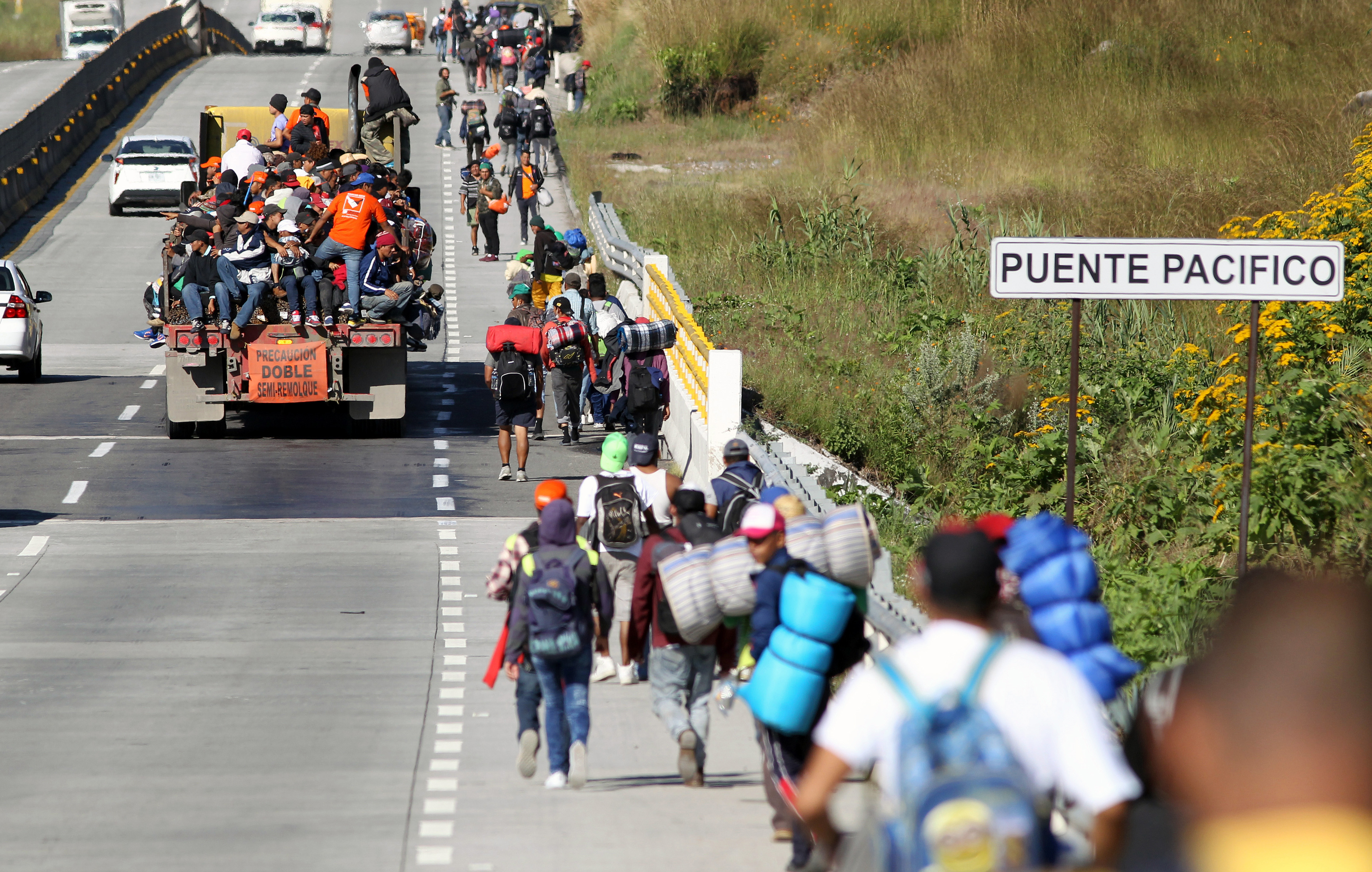Sights still on US, migrant caravan marks month on the road
Members of the migrant caravan say they are seeking a better future away from Central America’s “Northern Triangle” (ULISES RUIZ)
Ixtlán del Río (Mexico) (AFP) – The caravan of Central American migrants trekking across Mexico toward the United States marked one month on the road Tuesday with a full day of walking and hitch-hiking and no celebrations.
The caravan, which currently has around 5,000 migrants, set out from the city of San Pedro Sula in Honduras on October 13, fleeing poverty and violence — and finding itself on the receiving end of a flood of anti-immigrant attacks from US President Donald Trump.
The migrants, who have traveled more than 2,000 kilometers (1,250 miles) so far, were planning to cover another 400 kilometers and spend the night in the Pacific coast state of Sinaloa — still some 1,800 kilometers from the border city of Tijuana, their destination.
Many said they saw little cause for celebration in reaching the one-month mark in their exhausting journey.
“We’re celebrating absolutely nothing. How could we have a party when we don’t have houses or jobs, when we’re tired and sick and worried about our future?” said Wilson Ramirez, a 60-year-old Honduran man.
On the other side of the border, US authorities closed down several lanes of traffic at two border crossings from Tijuana into California so military personnel could install cement barriers and barbed-wire fencing.
Trump has ordered the deployment of up to 9,000 troops to the border, calling the caravan an “invasion” and warning it was full of “gang members” and “hardened criminals.”
US Defense Secretary Jim Mattis announced he would pay a visit Wednesday to the border city of McAllen, Texas.
Small groups of migrants that split off from the main caravan have already begun arriving in Tijuana, which sits across the border from San Diego, California. A group of 350 arrived Tuesday morning, many with small children.
– Pressing on –
Trump turned the migrant caravan into a hot-button issue ahead of last week’s US midterm elections, claiming — without providing evidence — it included “thugs” and “unknown Middle Easterners” who were about to “assault” the United States.
The migrants insist they are simply seeking a better future away from Central America’s “Northern Triangle” — El Salvador, Guatemala and Honduras, poor countries where gang violence has fueled some of the highest murder rates in the world.
They have decided to take the longer but safer west-coast route, rather than travel the dangerous east-coast route, where Mexican gangs regularly extort, kidnap and kill Central Americans. In 2010, 72 migrants were massacred by suspected drug traffickers in the violent state of Tamaulipas, on the border with Texas.
Two more caravans with about 2,000 migrants each are currently working their way up through Mexico behind the first.
More than 3,000 migrants who were traveling in caravans have meanwhile decided to seek asylum in Mexico, according to the authorities.
The remainder, however, say they are determined to press on, despite Trump’s measures to stop them — including an executive order last week to stop accepting asylum requests from immigrants who enter the country illegally.
That means migrants seeking asylum will have to line up at official border crossings — potentially leaving thousands of people waiting on the Mexican side for weeks or longer.
– Stranded by the road –
Facing Trump’s wrath themselves, Mexican authorities have alternately hindered and helped the migrants, deploying riot police to block them at the southern border but providing food and shelter at the local level, for example.
On Tuesday, the state of Jalisco, where the migrants spent the night, provided buses to take them to their next destination. But the migrants said they were forced to get out and walk as soon as the buses were outside Guadalajara, Mexico’s second city.
“They tricked us!” furious migrants shouted on the sweltering stretch of remote highway where they had to resume their journey on foot or by hitching rides on passing trucks.
“Now we’re stuck here suffering. My boy’s thirsty and there’s not even water out here,” said Jose Rubio, 23, a Honduran man traveling with his wife and three young children.
Disclaimer: This story has not been edited by Siliconeer and is published from a syndicated feed. Siliconeer does not assume any liability for the above story. Validity of the above story is for 7 Days from original date of publishing. Content copyright AFP.


